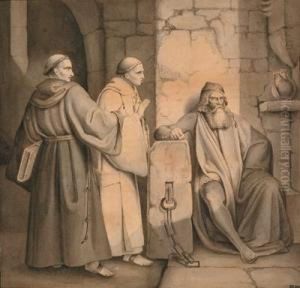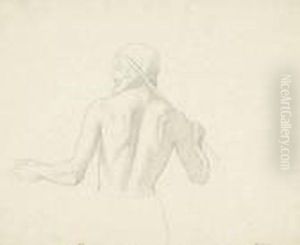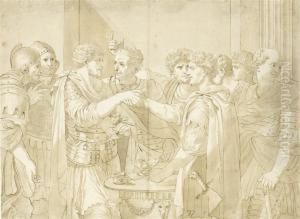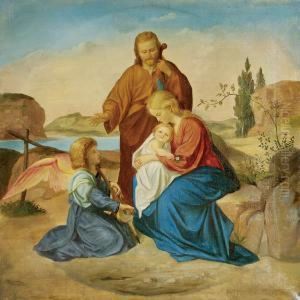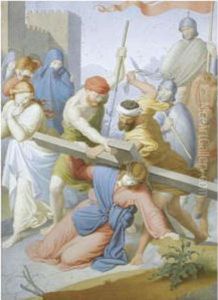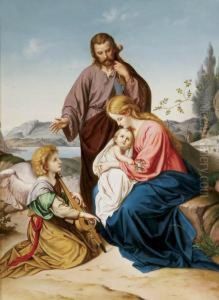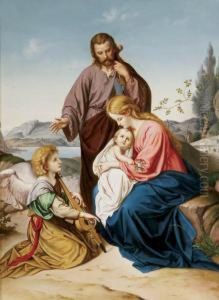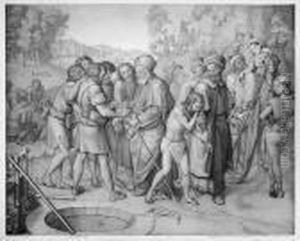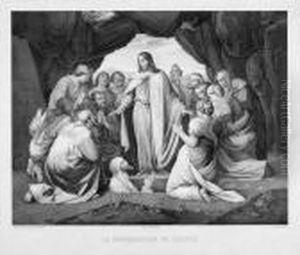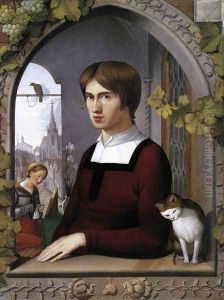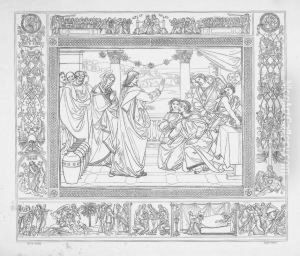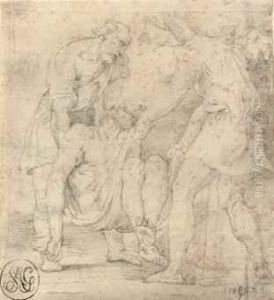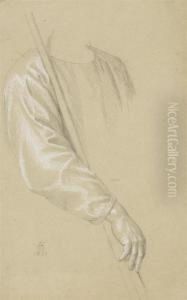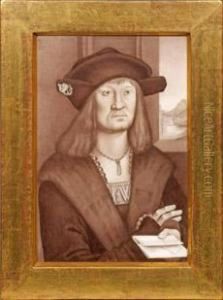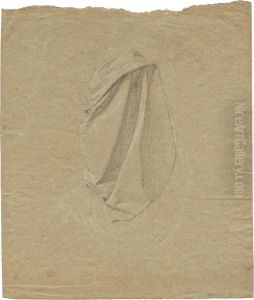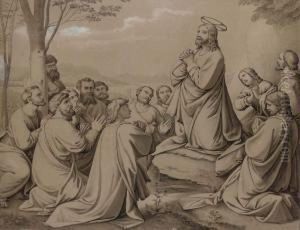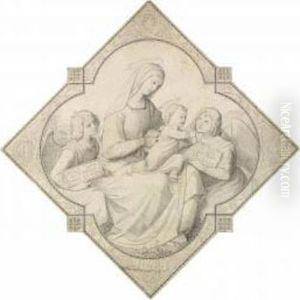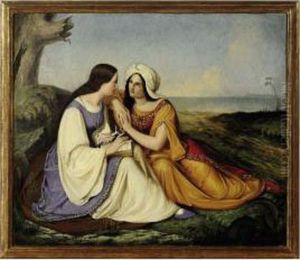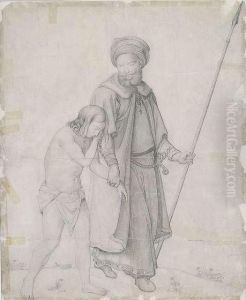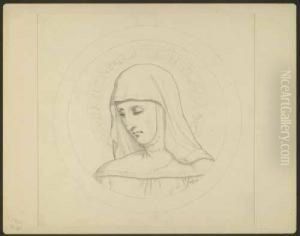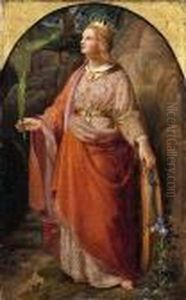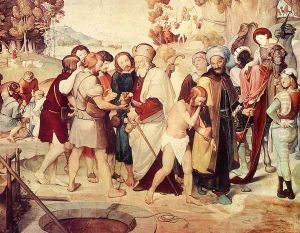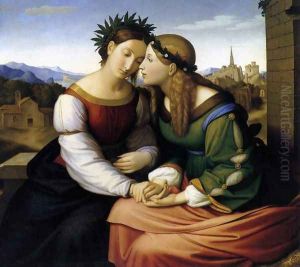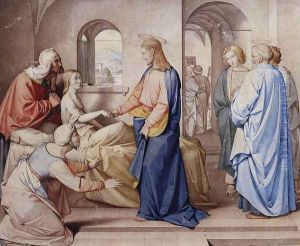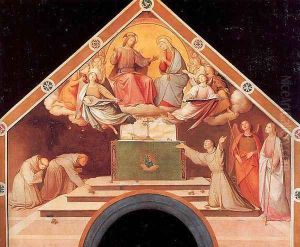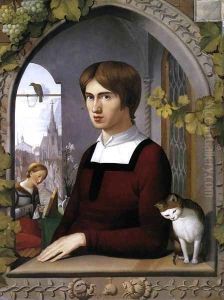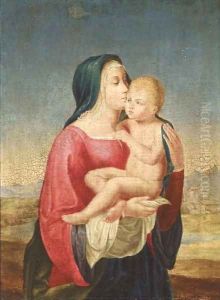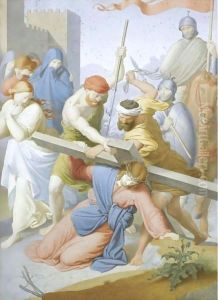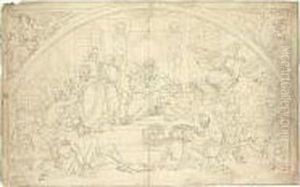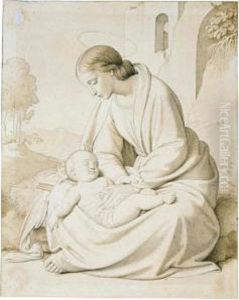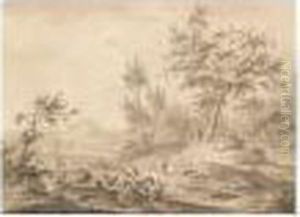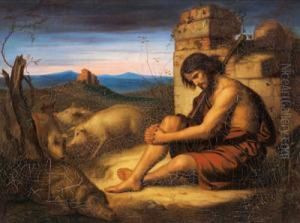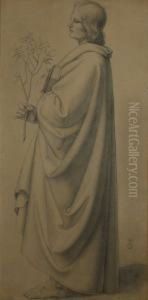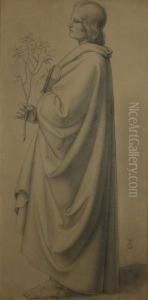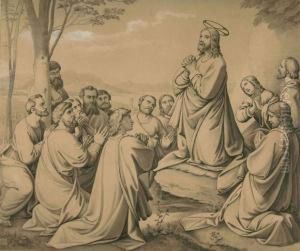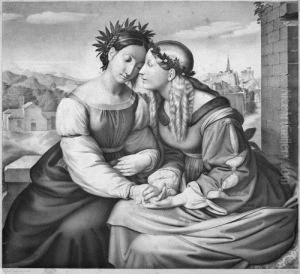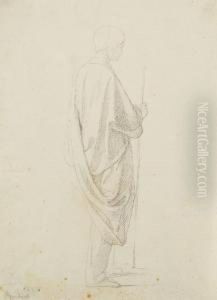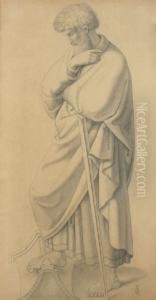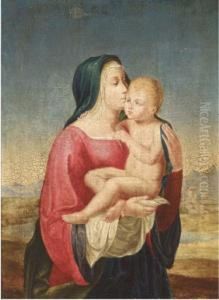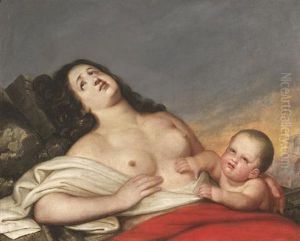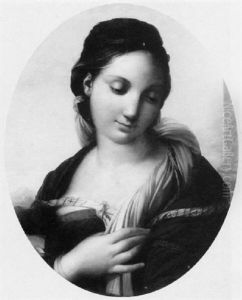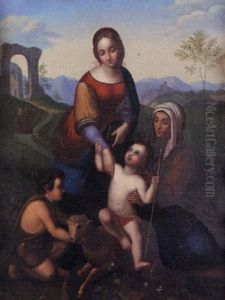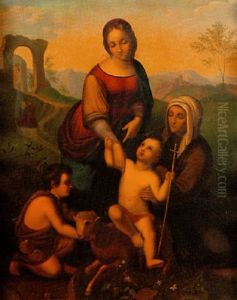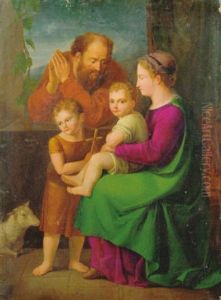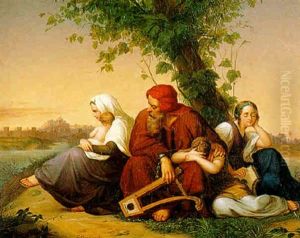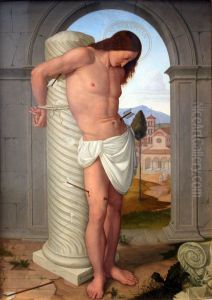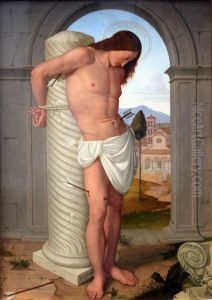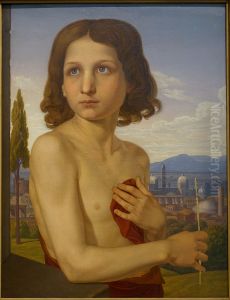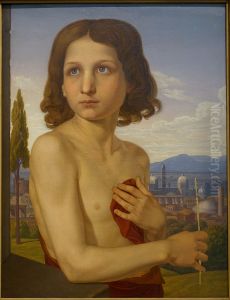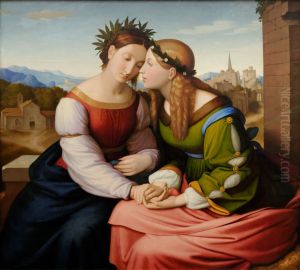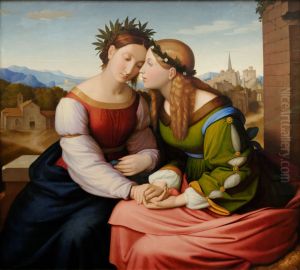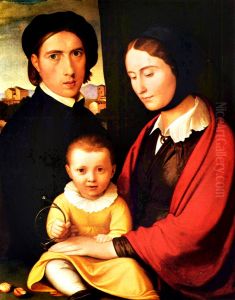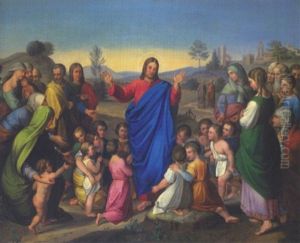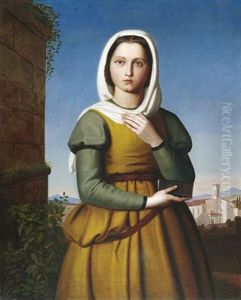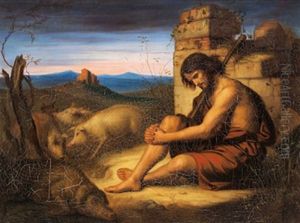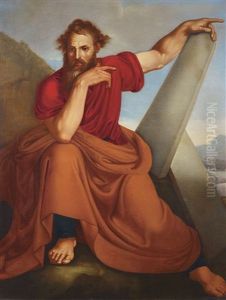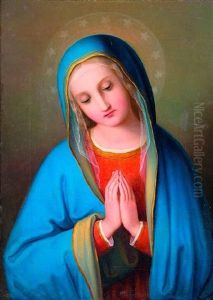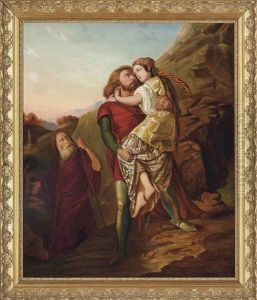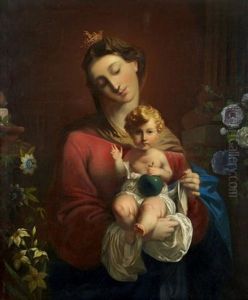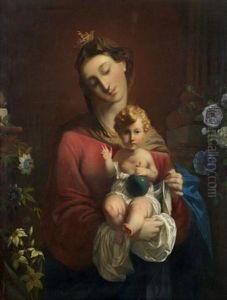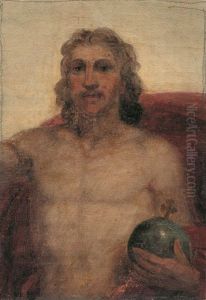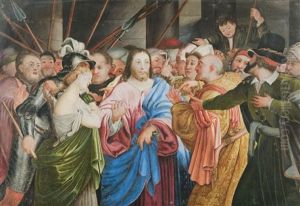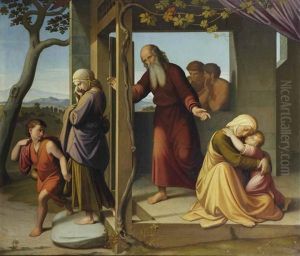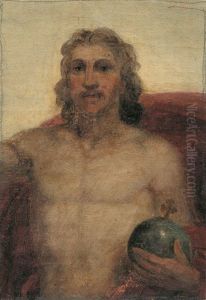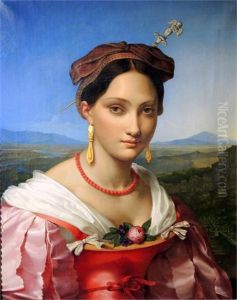Johann Friedrich Overbeck Paintings
Johann Friedrich Overbeck was a German painter and member of the Nazarene movement, born on July 3, 1789, in Lübeck, Holy Roman Empire (now Germany). He was known for his religious works characterized by their spiritual intensity and adherence to traditional iconography, which was a reaction against the prevailing Neoclassical trends of his time.
Overbeck began his artistic education at the age of fifteen when he enrolled at the Vienna Academy. It was here that he met Franz Pforr, Ludwig Vogel, and other artists with whom he formed the Brotherhood of St. Luke, later known as the Nazarenes, in 1809. The group sought to revive the spirit and techniques of medieval and early Renaissance art, emphasizing pious and devotional themes.
In 1810, Overbeck moved to Rome, which was to become his home for the rest of his life. There, he and his fellow Nazarenes settled in the abandoned monastery of San Isidoro and adopted a monastic lifestyle, which was reflected in their art. They were soon joined by other like-minded artists from Germany and Austria, and their communal studio became a center for the Nazarene movement.
Overbeck's works from this period were primarily religious frescoes and altarpieces. One of his most significant commissions was for the frescoes in the Casa Bartholdy (now in the Alte Nationalgalerie, Berlin), which he executed alongside his Nazarene peers. His style is characterized by clear outlines, a serene palette, and a focus on spiritual and moral themes.
Among Overbeck's notable works is the cycle of frescoes in the church of Santa Maria dell'Orto in Rome, which he began in 1831 and completed over a decade later. His paintings are often noted for their serene beauty and the sense of devout contemplation they evoke.
Overbeck also produced a number of influential drawings and sketches, as well as portraits. However, it is his religious compositions that have had the most lasting impact, influencing subsequent generations of Christian art.
As he aged, Overbeck's style became increasingly archaic, and he found himself somewhat at odds with the changing artistic landscape. Despite this, he remained a respected figure and was honored with numerous awards and memberships in artistic societies across Europe.
Johann Friedrich Overbeck died on November 12, 1869, in Rome, leaving behind a body of work that continues to be studied and admired for its devotion to spirituality and the historical continuity of Christian art.
